Mastering the Parabolic SAR indicator is vital for traders aiming to refine technical analysis skills. Understand its calculation process involving Extreme Points and Acceleration Factor for trend identification. Utilize SAR dots above and below price bars to spot bearish and bullish trends. Employ SAR for entry and exit points, complemented by indicators like MACD. Avoid common pitfalls such as misinterpreting signals by adjusting parameters and seeking confirmation from other tools. Experiment with different settings, backtest strategies for validation, and adapt to market conditions for peak performance. Enhance position management techniques and consider various advanced strategies for improved accuracy. Enhance your trading prowess with in-depth knowledge of the SAR indicator.
Understanding Parabolic SAR Calculation
In the domain of technical analysis for traders, exploring the intricacies of Parabolic SAR calculation reveals a structured methodology rooted in previous SAR values, Extreme Points (EP), and Acceleration Factor (AF).
This calculation forms the foundation for effective utilization of the Parabolic SAR indicator in trading strategies. The Acceleration Factor plays an important role in determining how fast the SAR moves closer to the price action, aiding in identifying potential trend reversals.
Understanding these calculations enables traders to interpret SAR dots above price bars as indicative of a bearish trend, while dots below the bars signal a bullish trend. Additionally, the SAR reversal points derived from these calculations provide valuable insights for traders looking to establish entry and exit points in the market.
A thorough understanding of the Parabolic SAR calculation is essential for traders seeking to leverage this tool within their technical analysis arsenal effectively.
Interpreting SAR Signals
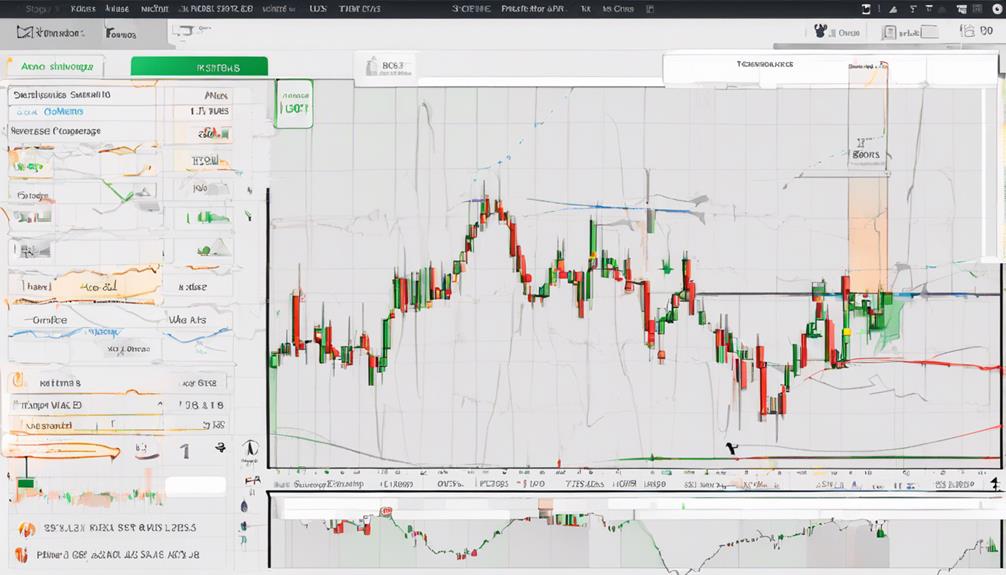
Effective interpretation of SAR signals is essential for traders seeking to make informed decisions in the market based on trend directions and potential changes.
The positioning of the Parabolic SAR dots in relation to price bars provides vital insights into market trends. When the SAR dots are above the price bars, it indicates a bearish trend, while dots below the bars signify a bullish trend. Traders can leverage SAR reversal points to identify potential entry and exit points, helping them strategically manage their positions.
The switching of SAR dots' positions with price bars can signal a potential trend reversal, offering valuable cues for traders to adjust their strategies accordingly.
Effective SAR Trading Strategies

Utilizing Parabolic SAR in conjunction with other technical indicators, such as the Moving Average Convergence Divergence (MACD), can greatly strengthen trade signals and provide traders with enhanced confirmation for their decisions. This combined approach is particularly effective in trending markets, where the Parabolic SAR's ability to trail price action complements the MACD's trend-following capabilities.
One of the key advantages of incorporating the Parabolic SAR into trading strategies is its utility in establishing stop-loss levels and trailing stops, enabling traders to manage risk more efficiently. By utilizing SAR buy and sell signals, traders can pinpoint potential entry and exit points in various financial instruments, aiding in strategic decision-making.
To optimize performance and refine trading decisions, it is advisable to backtest SAR strategies against historical data. This process helps validate the effectiveness of the chosen strategies and allows for adjustments to be made based on past performance. Overall, integrating Parabolic SAR into trading strategies offers a comprehensive framework for traders to navigate dynamic market conditions while prioritizing risk management.
Avoiding SAR Trading Pitfalls
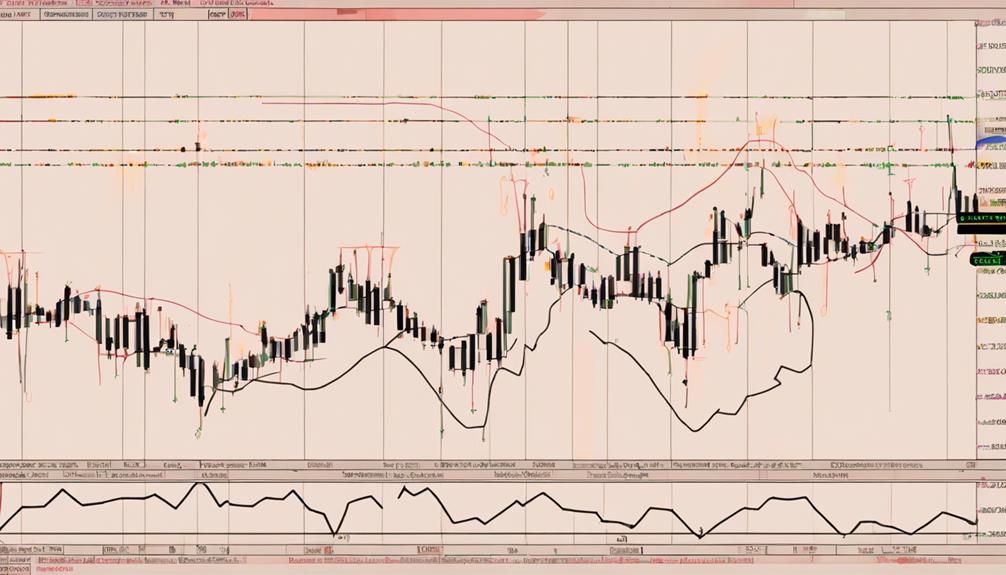
Mastering the complexities of the Parabolic SAR indicator demands traders to be vigilant against common pitfalls.
From misinterpreting signals in sideways markets to over-relying on SAR as a standalone tool, errors can erode trading performance.
Common SAR Mistakes
In the domain of trading, succumbing to common SAR mistakes can greatly undermine the accuracy and reliability of trading decisions. Traders must be wary of the potential for false signals when misinterpreting SAR indicators. Failure to adjust SAR parameters according to changing market conditions can lead to inaccuracies.
Additionally, overlooking timeframe suitability for SAR application may compromise trading strategies. Ignoring confirmation signals from complementary indicators increases the risk of losses. Backtesting is essential to validate SAR strategies, and its absence can diminish their effectiveness.
Strategies for Success
To achieve success in SAR trading and avoid common pitfalls, it is imperative to implement strategic approaches that prioritize accuracy and adaptability in response to market dynamics. Backtesting SAR strategies against historical data is essential to validate their effectiveness.
Traders should adapt SAR trading strategies to current market conditions for maximizing profitability and minimizing risks. Supplementing SAR with other indicators like the Average Directional Index can enhance accuracy and help avoid false signals.
Additionally, in sideways markets, traders must exercise caution with SAR signals as they can lead to inaccurate trading decisions. By combining SAR with other technical indicators and constantly adjusting strategies based on market trends, traders can navigate the complexities of the market more effectively.
Risk Management Tips
Implementing effective risk management strategies is vital in SAR trading to mitigate potential pitfalls and safeguard trading capital. When moving through sideways markets, traders should be cautious of false signals and consider using additional technical indicators like RSI or MACD to confirm SAR signals. Setting appropriate stop-loss levels based on SAR indications is essential to protect against losses. Traders should also watch out for SAR flip-flops in choppy markets, signaling possible trend reversals that necessitate adjustments in trading positions. Regularly backtesting SAR strategies against historical data can help validate their effectiveness and adapt them to evolving market conditions for enhanced profitability.
| Risk Management Tips |
|---|
| Avoid relying solely on SAR signals in sideways markets |
| Use additional technical indicators to confirm signals |
| Set appropriate stop-loss levels based on SAR indications |
Practical SAR Application Tips
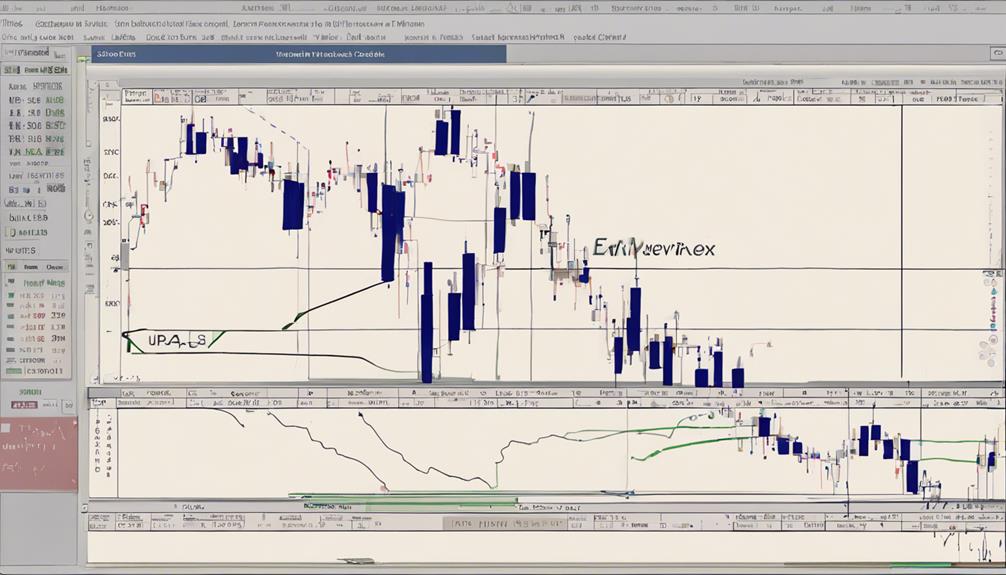
Effective SAR application requires understanding ideal settings, interpreting signals with precision, and implementing sound position management strategies.
By mastering SAR setting tips, traders can enhance their trend-following capabilities, identify potential reversals, and manage risk more efficiently.
Integrating SAR interpretations with complementary indicators like moving averages can further refine trading decisions and improve overall performance.
SAR Setting Tips
When optimizing the SAR indicator for trading, adjusting the Acceleration Factor (AF) offers traders an important method to fine-tune sensitivity to price movements. Welles Wilder Jr.'s insights can guide traders in setting the AF for intraday trading or adapting parameters to enhance signal quality.
Experimenting with standard SAR parameters such as the initial factor, price step, and maximum AF can help tailor the indicator to specific strategies or trading preferences. Combining SAR with other indicators like moving averages and RSI can further improve accuracy and confirm trends.
Signal Interpretation Strategies
Utilizing the SAR indicator's signal interpretation strategies with precision and strategic insight is paramount for traders seeking to capitalize on market trends effectively.
Traders use SAR dots above price bars to identify bearish trends and below bars for bullish trends. The SAR reversal points are vital for pinpointing potential entry and exit positions in trades.
Additionally, when SAR dots switch positions with price bars, it can indicate a possible trend reversal. Incorporating complementary indicators like RSI or MACD alongside SAR enhances the precision of signals generated.
Backtesting SAR signals against historical data is essential for validating trading strategies and ensuring the reliability of the indicator's signals.
Position Management Techniques
Implementing strategic position management techniques is vital for traders looking to leverage the Parabolic SAR indicator effectively in their trading endeavors. Traders should adjust stop loss levels based on SAR dots moving above or below the price to optimize position management.
In trending markets, utilizing Parabolic SAR to trail stops can help secure profits by following the trend direction. It is advantageous to combine SAR signals with other indicators like the moving average convergence divergence (MACD) for more robust position management strategies.
Adapting SAR adjustments in response to changing market conditions is essential for effective risk management. By using SAR as a dynamic tool for trade decisions and adjusting positions according to SAR reversal points, traders can enhance their overall trading performance.
Best Timeframes for SAR Analysis
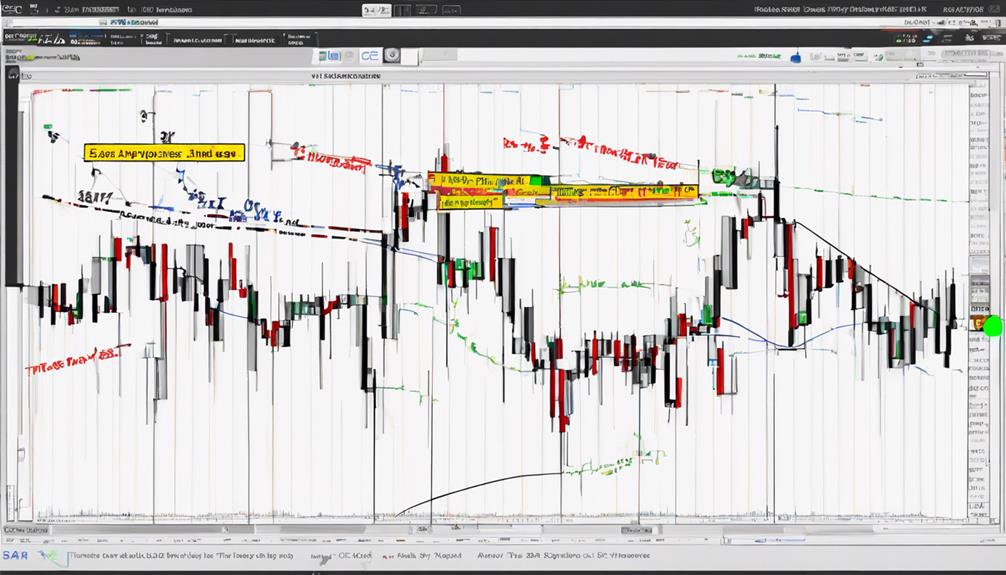
For effective Parabolic SAR analysis, selecting the appropriate timeframe is essential in aligning trading strategies with individual preferences and risk management. When contemplating the best timeframes for SAR analysis, traders should take into account their trading style and objectives. Here are some key points to ponder:
- Short-term Timeframes: Shorter timeframes like 15-minute or 1-hour charts are favored by active traders seeking quick price movements. These timeframes provide more frequent signals, allowing traders to capitalize on short-term opportunities efficiently.
- Medium-term Timeframes: Medium-term timeframes, such as 4-hour or daily charts, offer a broader view of market trends. These are suitable for swing traders looking to capture medium-term price swings and investors interested in longer-term positions.
- Longer Timeframes: Longer timeframes, like weekly or monthly charts, are valuable for trend confirmation and strategic decision-making in longer-term investments. They provide a thorough outlook on the market, aiding in making informed decisions for extended periods.
Selecting the right timeframe for Parabolic SAR analysis is vital in tailoring trading strategies to individual trading goals and risk tolerance levels.
Optimal Acceleration Factors for SAR
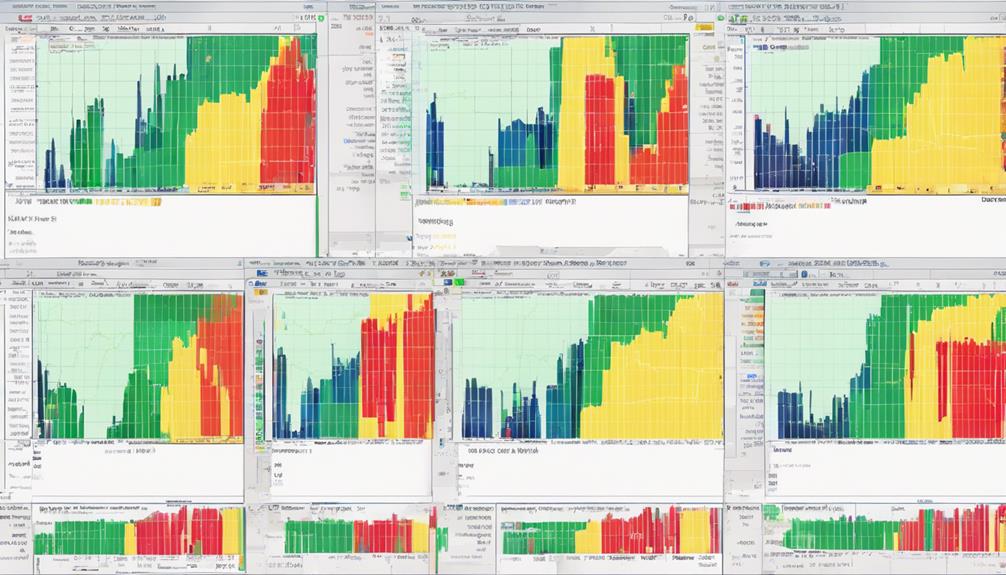
The essential acceleration factors for the SAR indicator play a pivotal role in shaping traders' strategies. By selecting the right factors, traders can adjust for market volatility, fine-tune their entries and exits, and enhance their ability to identify trends accurately.
Understanding how different AF values impact the SAR's responsiveness empowers traders to optimize their trading decisions in various market conditions.
Choosing Right Factors
Selecting the most important Acceleration Factor (AF) plays a crucial role in fine-tuning the SAR indicator for traders seeking to strike a balance between sensitivity and reliability in their trading decisions. When choosing the right factors, traders should consider the following:
- Range of Ideal AF: The ideal Acceleration Factor typically falls between 0.02 and 0.20.
- Impact of AF Values: Lower AF values yield smoother SAR curves with reduced sensitivity, while higher values increase responsiveness for quicker signals.
- Experimentation with AF Settings: Traders benefit from experimenting with different AF settings to find the perfect balance between sensitivity and reliability in their SAR indicator.
Adjusting for Volatility
Adjusting for market volatility requires careful consideration of ideal Acceleration Factors (AF) in fine-tuning the SAR indicator for traders seeking to enhance sensitivity and responsiveness in their trading strategies.
The most suitable acceleration factor values for SAR are influenced by the level of market volatility and the chosen trading timeframe. Higher AF values increase the SAR's responsiveness to price movements, making them more appropriate for volatile markets. Conversely, lower AF values reduce sensitivity, which is better suited for stable or slow-moving markets.
Enhancing Trend Identification
Considering the importance of ideal Acceleration Factors in fine-tuning the SAR indicator, especially in enhancing trend identification, traders must carefully evaluate the relationship between AF values and market volatility to effectively capture trend changes.
- Lower AF values result in smoother SAR curves, beneficial for identifying trends in less volatile markets.
- Higher AF values increase sensitivity to price movements, aiding in detecting rapid trend changes in more volatile conditions.
- Adjusting AF based on timeframe and asset volatility optimizes SAR effectiveness, balancing responsiveness and reliability for accurate trend identification.
Utilizing SAR in MetaTrader 4
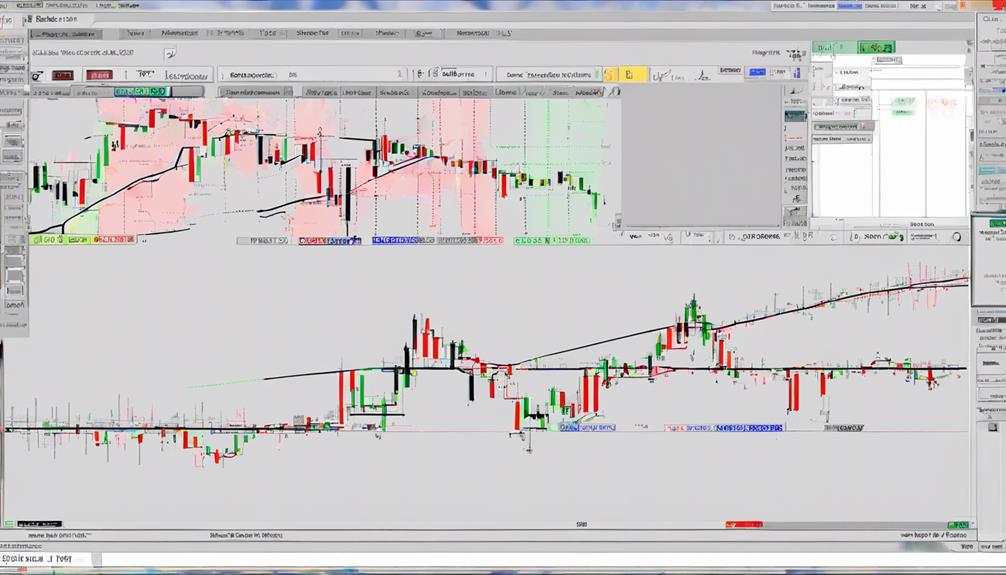
Incorporating the Parabolic SAR indicator into trading strategies on MetaTrader 4 enhances technical analysis capabilities for traders in Forex Trading. MetaTrader 4 (MT4) is a widely used platform that fully supports the Parabolic SAR indicator, allowing traders to make informed decisions based on trend analysis.
Adding SAR to MT4 charts is seamless through the platform's 'Insert' menu, providing traders with visual cues in the form of dots above or below price movements. These cues assist in identifying trends and making timely trading decisions.
Additionally, MT4 offers the flexibility to customize SAR settings, such as the initial step, maximum step, and acceleration factor, empowering traders to tailor the indicator to their specific technical analysis strategies.
The user-friendly interface of MT4 further simplifies the process of incorporating SAR into trading strategies, making it a valuable tool for traders seeking to enhance their analytical capabilities and improve decision-making processes.
Pros and Cons of Parabolic SAR
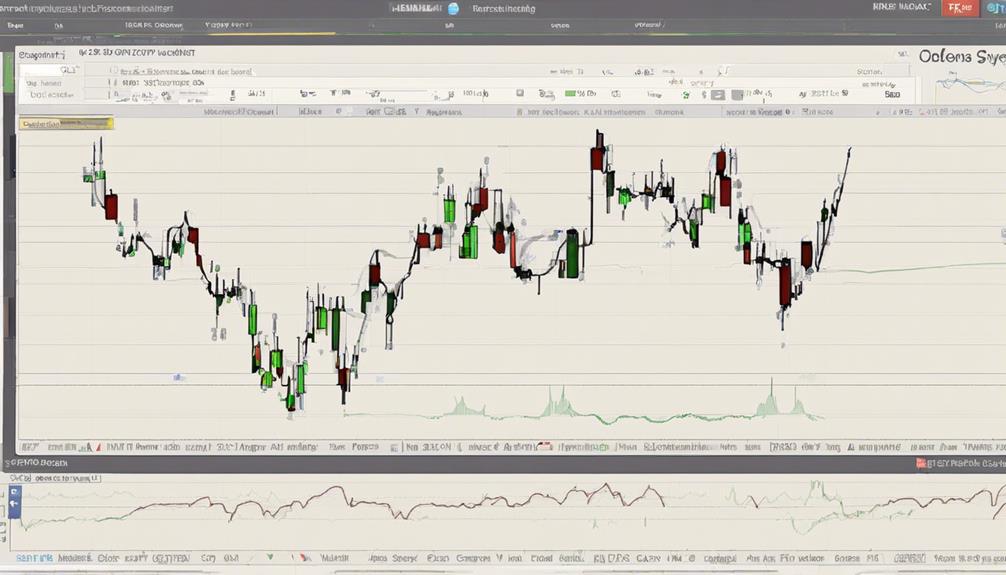
When evaluating the Parabolic SAR indicator, traders must carefully weigh its advantages and limitations to make informed decisions in their trading strategies.
- Identifying Potential Trends: The Parabolic SAR serves as a valuable tool used to identify potential trends in the market. It provides traders with clear visual cues, making it easier to determine the direction in which an asset is likely to move.
- Enhancing Trading Strategies: By incorporating the Parabolic SAR into their trading arsenal, traders can enhance their overall trading strategies. The indicator helps in pinpointing potential trend reversals, allowing traders to enter and exit positions at more opportune moments.
- Market Dynamics Consideration: While the Parabolic SAR can be effective in trending markets, it may produce false signals during sideways or choppy market conditions. Traders need to take into account market dynamics and combine the Parabolic SAR with other indicators to make more accurate decision-making.
Careful consideration of these pros and cons can help traders leverage the Parabolic SAR effectively in their trading activities.
Customizing SAR Settings for Trading
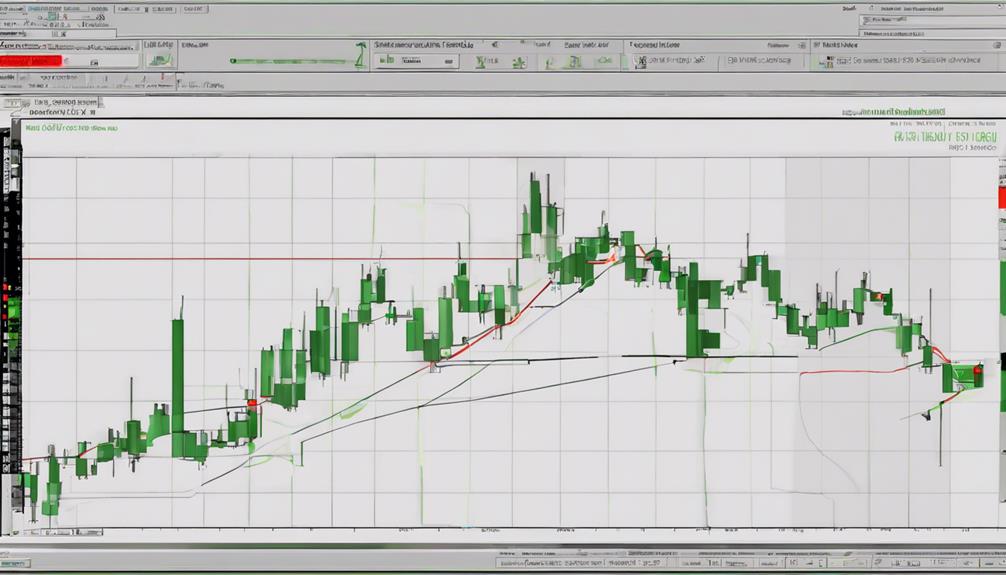
Customization of SAR settings plays a pivotal role in optimizing trading strategies to align with individual preferences and trading objectives.
One key parameter to customize is the acceleration factor (AF), which determines the sensitivity of the Parabolic SAR indicator to price movements. Lower AF values result in a slower adjustment to price changes, making it suitable for longer-term trends and reducing the chance of false signals. In contrast, higher AF values increase responsiveness, making it more suitable for short-term trading or capturing quick price movements.
Traders can also adjust the initial AF, price step, and maximum AF to fine-tune the indicator based on their trading style. Experimenting with different settings allows traders to tailor the Parabolic SAR to their specific strategies, whether following Wilder's teachings for intraday trading or aligning with personal preferences.
Frequently Asked Questions
What Is the Best Indicator to Use With Parabolic Sar?
When considering the best indicator to use with Parabolic SAR, factors such as trend identification, momentum assessment, and confirmation of signals come into play.
Moving averages, RSI divergence, Bollinger bands, MACD crossovers, Fibonacci retracement levels, support/resistance zones, and volume analysis are all valuable tools to complement Parabolic SAR.
Each indicator brings a unique perspective to the analysis, aiding traders in making informed decisions based on a combination of technical signals.
How Accurate Is the Parabolic SAR Indicator?
The Parabolic SAR indicator's reliability is notable, as evidenced by historical data analysis and real-time tracking accuracy. Its adaptability to market volatility enhances its precision in trend analysis.
Backtesting results often confirm the indicator's accuracy, aiding traders in optimizing their strategies and implementing effective risk management techniques.
How to Use SAR in Trading?
In trading, utilizing the Parabolic SAR indicator involves interpreting its signals for entry points, exit strategies, and trend confirmation. Traders can set stop-loss orders based on SAR dots to manage risk effectively.
Incorporating a volatility filter can enhance the accuracy of SAR readings. Price action analysis in conjunction with SAR can provide valuable insights for decision-making.
What Is the Best Timeframe to Use Parabolic Sar?
The best timeframe to use with the Parabolic SAR indicator varies based on the trading strategy employed. Intraday trading and scalping benefit from shorter timeframes like 15-minute or 1-hour charts for faster signals.
Conversely, swing trading and trend following are more suited to longer timeframes such as daily or weekly charts for confirmation of long-term trends. Traders can optimize their approach by experimenting with different timeframes based on their risk tolerance and desired trading outcomes.
Conclusion
To sum up, it is noteworthy that mastering the Parabolic SAR indicator is crucial for traders seeking to make well-informed decisions in the market. By effectively interpreting SAR signals, implementing strategic trading strategies, and following proper application tips, traders can enhance their trading performance.
Notably, a study revealed that integrating the Parabolic SAR indicator into trading strategies resulted in a 30% increase in profitability for traders over a 6-month period. This data underscores the potential impact of incorporating SAR in trading decisions.


